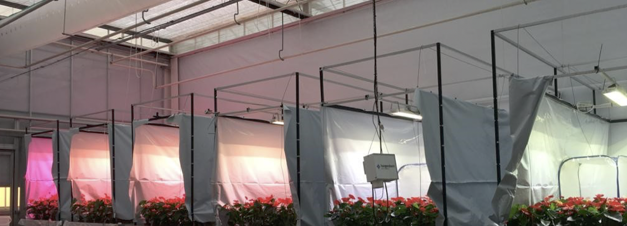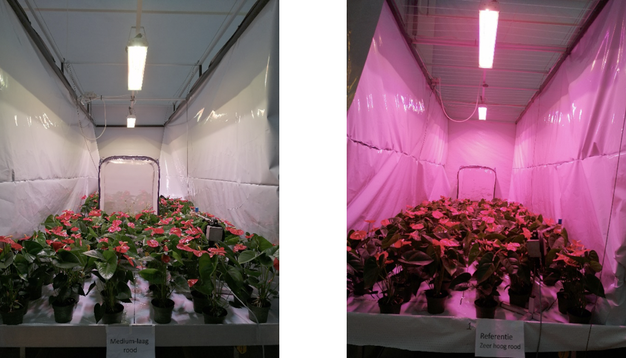Sustainability is becoming a key concept in greenhouse horticulture as growers seek to reduce energy consumption while achieving better yields. Wageningen University in the Netherlands joined forces with Hungary-based lighting provider Food Autonomy to deliver the best lighting conditions for pot anthurium grown in greenhouse conditions.

The Greenhouse Horticulture Business Unit Wageningen University & Research (WUR) concentrates on applied research for greenhouse horticulture, covering all aspects of cultivation (except for breeding). Scientists at the business unit test and develop crop models, lighting recipes, sensors, irrigation, and crop protection strategies with a focus on sustainability. The main goal is inputs and emissions reduction while improving crop yield and quality.
Sustainable crop cultivation technologies
With the financial support of the Dutch Ministry of Agriculture, WUR launched the 'Greenhouse 2030: Sustainable cultivation with a future'. This is a project to demonstrate sustainable crop cultivation technologies without emissions and without the use of fossil energy. There are four different crops involved in the initiative: strawberry, gerbera, freesia, and pot anthurium. The greenhouse, which uses no gas for heating, is an all-electric facility with full LED lighting. A heat pump is used to dehumidify the greenhouse, ensuring that latent heat is recovered.
The Greenhouse2030 is the first operation with full LED in high intensity for potanthurium. The experience of the first two winters showed that the chosen LED spectrum might not be the best for this crop as it affects the plant shape by inducing flower stem elongation. Also, questions arose about the ideal day length in winter. Therefore, researcher Nieves Garcia Victoria has recently conducted a test on the ideal light spectra for growing pot anthurium, one of the most important pot plant crops in the Netherlands.

Photo: Nieves Garcia
Using LED lamps provided by Food Autonomy, the aim of the experiment was to test a range of different spectra to reduce stem elongation in the plants. The lamps were used to test 6 different light spectra and come up with the ideal light conditions. The trial, which started in March (2021), included 2 cultivation rounds, each 8 weeks long. Using shading screens, scientists simulated winter conditions in the greenhouse allowing only a small proportion of natural light. The ratio was 20% natural light and 80% from lamps to create typical winter conditions, which is the most critical period for cultivating with artificial light. In the first round of cultivation, lamps were used for 12 hours, and in the second round, for 16 hours as researchers were experimenting with the optimal duration of day length.
Changing the light spectrum
"Measurements show that changing the light spectrum resulted in an improvement in the shape of the plants, and we were able to reduce the level to which the stems of the flowers elongate," said Nieves Garcia Victoria. Results of the experiment proved that the hypothesis that a different spectrum can contribute to reducing stem elongation was correct, she added.
The evaluation of the data gathered during the experiment is in progress, and larger-scale testing may follow, Nieves Garcia Victoria said, adding that she would be pleased to use the same Food Autonomy lamps in any follow-up experiments. Food Autonomy's ability to create customized spectra on very short notice was a key factor in choosing their product, she said.
"Finding the right light spectrum is critically important for growers. The switch from HPS lamps to LEDs needs to be made, and growers need to be precise when they decide on the spectrum and light intensity they use. LED is unquestionably a more sustainable solution as it reduces energy consumption but choosing the best light spectrum (the colors to be used) are all very important aspects that have an impact on the crop. There is definitely a need for more research in this area," according to Nieves Garcia Victoria.
For more information:
Food Autonomy
www.foodautonomy.org
info@foodautonomy.org
